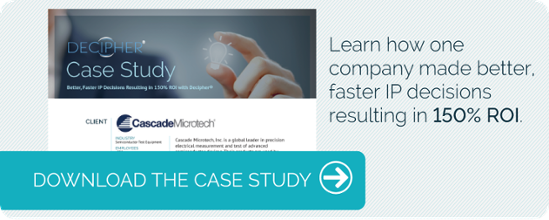When managed effectively, intellectual property can be a critical growth driver for your organization, impacting branding, product development, revenue opportunities, processes, and more. However, intellectual property can sometimes be overlooked by resource-strapped organizations. In this article, we’ll go back to the basics and present a set of tips for managing intellectual property for business success.
Review Regularly
Like many business assets, intellectual property is not “set it and  forget it” — it is most meaningful when reviewed regularly. Developing a regular cadence to review intellectual property performance, processes and spend can help your organization maximize its return on investment. For example, evaluating how much your organization is spending on intellectual property administration costs can reduce unproductive legal spend. Similarly process reviews can help your organization optimize resources and streamline from ideation to commercialization. On the whole, regular reviews of intellectual property asset performance can show the organization which assets are over or underperforming so investments can be made flexibly.
forget it” — it is most meaningful when reviewed regularly. Developing a regular cadence to review intellectual property performance, processes and spend can help your organization maximize its return on investment. For example, evaluating how much your organization is spending on intellectual property administration costs can reduce unproductive legal spend. Similarly process reviews can help your organization optimize resources and streamline from ideation to commercialization. On the whole, regular reviews of intellectual property asset performance can show the organization which assets are over or underperforming so investments can be made flexibly.
Data Analysis
Data is crucial for an effective intellectual property management strategy. Data enables your organization to make faster and better decisions. Intellectual property metrics allow for thorough insight throughout the process. Unfortunately, this data is not always captured by organizations that deprioritize intellectual property management against other functions. Without assessment of this data, the organization risks making decisions blindly. Some examples of these data points are:
- Time spent per employee on innovation-related activities
- Number of inventions generated
- Time consumed by invention disclosure process
- Invention disclosures resulting in patent applications ( a quantity measure)
- Ratio of issued patents to patent applications ( a quality measure)
- Ratio of prosecution costs to issued patents (an efficiency measure)
Automate Where Possible
Automation streamlines intellectual property management and reduces the opportunity for error. For example, when processes are completed via email and paper, it is difficult for stakeholders to collaborate for an improved end product. Additionally, details can be easily lost. Automating processes gives your organization more control over the details and frees up valuable time for the intellectual property team to focus on strategic planning and execution.
Take a Belt and Suspenders Approach
Many of your creative efforts merit protection. But it is not necessarily one approach or another. It is often possible, and wise, to apply multiple forms of protection. For example, with certain exceptions or additional protective measures such as nondisclosure agreements, patentable inventions should still be guarded as trade secrets until the applications are published. For that matter, you might strategically hold back from patenting certain aspects of an invention as trade secrets - such as the method used to manufacture it. Copyrights should be considered in order to protect written descriptions such as data sheets, product brochures, source code, etc. Trademarks should overlap otherwise protected products and services, and multiple classification codes should be considered for each trademark depending on what you wish to protect.
Implement IP Management Software
Intellectual property management software enables your organization to keep track of all this and more. These systems give you more control through greater visibility of your entire inventory of IP and its status, as well as analysis, reporting and reminders. By implementing one of these solutions, your organization can see marked time and cost savings, in addition to additional revenue opportunities.
To learn how one organization used intellectual property management software to take control of its portfolio, read this brief case study.


